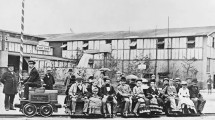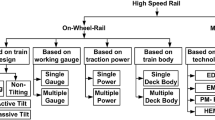The paper deals with the possibility of installing a double-circuit gas insulated transmission line (GIL) in the pilot tunnel of the new planned railway galleries Fortezza–Innsbruck. The high GIL power ratings with very low power losses would allow a strong and highly efficient energy exchange particularly useful for the future European Market and could represent a new fundamental step in reconstructing the European interconnection network. Two separate railway tunnels (Φ≈9.6 m) will run under the Brenner Pass from Fortezza (Italy) to Innsbruck (Austria) but will be preceded by the construction of a continuous pilot tunnel (Φ≈4.3 m) useful for work logistics and chiefly for detection of the rock stratigraphy. Once the whole work will be over, the pilot tunnel will be used as a service gallery (drainage of water) where a double-circuit GIL can efficiently be installed. The paper gives the main characteristics of planned galleries, several details on the transmission line and its performance, the electro-magnetic field impact considering the proximity effects and the earthing arrangement in order to zero the touch-voltages in case of phase-to-enclosure short-circuits. The chief features of GIL solution are the lowest transmission power losses and the absence of shunt reactive compensation for this line length (appr. 65 km) but mostly the safety of personnel in case of short-circuit and the possibility of usual re-closure cycles for operation continuity. This paper gives an overview of other analysis: GIL no-load regime, electromagnetic interferences between railway and GIL system, pilot tunnel ventilation and GIL thermal regime. In order to achieve satisfying power flows, the new link requires both Italian/Austrian regional grids (380 kV÷110 kV) to be restructured and rationalized. This research is supported by European Community in the framework of TEN-ENERGY programme for analyzing both, technical and environmental issues of integrating 380 kV gas insulated transmission line and rail transport in tunnel between Italy and Austria entitled "Studies for a new 380 kV transmission line between Italy and Austria through the Brenner pass: Integration of Electricity and Rail Transport in Tunnel". The project leader is TERNA (Italian TSO) whereas the associated beneficiaries are the University of Padova and TIWAG-Netz AG (Tyrol TSO) with support of Graz University of Technology.
Der vorliegende Bericht beschäftigt sich mit der Machbarkeit der Nachnutzung des Pilotstollens zum geplanten Brenner-Basistunnel von Innsbruck nach Franzensfeste für eine zweisystemige gasisolierte Leitung (GIL). Die hohe Übertragungskapazität in Verbindung mit den niedrigen Übertragungsverlusten ermöglicht einen leistungsstarken, hoch effizienten Energieaustausch im Sinne des zukünftigen europäischen Marktes und setzt einen grundlegenden Schritt zum Ausbau des europäischen Verbundnetzes. Zwei getrennte Eisenbahntunnel (d≈9,6 m) sollen zwischen Innsbruck (Österreich) und Franzensfeste (Italien) den Brenner Pass unterqueren. Dabei wird zur geologischen Erkundung ein durchgehender Pilotstollen errichtet (d≈4,3 m), der auch noch während der Bauphase der Eisenbahnröhren zum Abtransport von Ausbruchmaterial und für logistische Zwecke gebraucht wird. Nach der Fertigstellung der beiden Hauptröhren soll dieser Tunnel nur mehr für Wartungsarbeiten und zur Ableitung von Bergwasser genutzt werden, womit der Tunnel für eine effiziente Unterbringung einer zweisystemigen GIL zur Verfügung gestellt werden kann. Beschrieben werden die Hauptmerkmale der geplanten Röhren, Details zur Übertragungsleitung und deren Leistung, die elektromagnetische Beeinflussung unter Berücksichtigung des "Proximity-Effekts" und notwendige Erdungsmaßnahmen zur Vermeidung von Berührungsspannungen im Falle eines Erdkurzschlusses. Die Vorteile bei der Realisierung der Übertragungsleitung als GIL liegen neben den niedrigen Übertragungsverlusten, dem Verzicht auf Blindleistungskompensation trotz der großen Leitungslänge (ca. 65 km), hauptsächlich beim Fehlen brennbarer Materialien, wodurch die Personensicherheit auch im Falle eines Kurzschlusses gewährleistet wird, und bei Wiederversorgungszeiten im Falle eines Lichtbogenfehlers, die im Bereich jener von Freileitungen liegen. Weiters enthält dieser Bericht eine Übersicht über andere Untersuchungen, wie: GIL-Leerlaufverhalten, elektromagnetische Beeinflussung zwischen dem GIL-System und der Bahnstromversorgung, Belüftung des Pilotstollens und thermisches Verhalten der GIL. Um einen ausreichenden Lastfluss zu erzielen, wird eine Umstellung in den regionalen Netzen Österreichs und Italiens (380 kV – 110 kV) erforderlich. Die Studie über die technischen und ökologischen Auswirkungen der Kombination einer 380-kV-GIL-Verbindung mit der Eisenbahnverbindung durch den Brenner-Basistunnel zwischen Österreich und Italien wurde im Rahmen des "TEN-ENERGY"-Programms gefördert und trägt den Titel "Studies for a new 380 kV transmission line between Italy and Austria through the Brenner pass: Integration of Electricity and Rail Transport in Tunnel". Zum Projektkoordinator wurde der italienische Übertragungsnetzbetreiber TERNA ernannt. Weiters an der Studie mitgewirkt haben die Universität Padua und der Tiroler Übertragungsnetzbetreiber TIWAG-Netz AG, unterstützt durch die Technische Universität Graz.
Similar content being viewed by others
References
Benato, R., Caldon, R., Paolucci, A. (1997): Automatic procedure for electromagnetic interferences between electric systems of different nature. Proc. of Italian Electrical and Electronics Association (AEI) Annual Meeting, Vol. 3, 1997, Baveno, Italy: 19–26.
Benato, R., Caldon, R., Paolucci, A. (1998): Matrix algorithm for the analysis of high speed railway and its supply system. L'Energia Elettrica, Vol. 75, No. 5, September–October 1998: 304–311.
Benato, R., Carlini, E. M., Di Mario, C., Fellin, L., Knollseisen, G., Laußegger, M., Muhr, M., Wörle, H., Woschitz, R. (2005a): Gas insulated transmission lines in railway galleries – Part II. Proc. of IEEE St. Petersburg Power Tech '05 Conf., 27–30 June 2005, St. Petersburg, Russia.
Benato, R., Carlini, E. M., Di Mario, C., Fellin, L., Paolucci, A., Turri, R. (2005b): Gas insulated transmission lines in railway galleries. IEEE Trans. on Power Delivery. Vol. 20, Issue 2, April 2005.
Benato, R., Dughiero, F. (2003): Solution of coupled electromagnetic and thermal problems in gas insulated transmission lines. IEEE Trans. on Magnetics. Vol. 39, No 3, May 2003: 1741–1744.
Benato, R., Dughiero, F., Forzan, M., Paolucci, A. (2002): Proximity effect and magnetic field calculation in GIL and in isolated phase bus ducts. IEEE Trans. on Magnetics, Vol. 38, No. 2, March 2002: 781–784.
Benato, R., Fellin, L. (2004): Magnetic field computation for gas insulated lines installed in gallery. Proc. of 39th Universities' Power Engineering Conf. – UPEC 2004, Bristol, UK, September 6–8, 2004; Vol. I: 6–10.
Benato, R., Fellin, L., Marzenta, D., Paolucci, A. (2000): Gas-insulated transmission lines: excellent performance and low environmental impact. Proc. of Int. Symposium and Exhibition on Electric Power Engineering at the Beginning of the Third Millennium – EPETM, May 12–18, 2000, Napoli-Capri, Vol. 1: 385–405.
Benato, R., Paolucci, A. (2005): Operating capability of long AC EHV transmission cables. Electric Power Systems Research, Vol. 75/1, July 2005: 17–27.
Brenner Basistunnel: Eisenbahnachse München-Verona, Bericht 2002. – Galleria di base del Brennero: Asse ferroviario Monaco-Verona, Rapporto 2002.
CCITT (1989): Directives concerning the protection of telecommunication lines against harmful effects from electric power and electrified railway lines. Geneva, 1989.
EC, 2003 2003/54/CE of the European Parliament and of the Council of 26 June 2003 concerning common rules for the internal market in electricity and repealing Directive 96/92/EC – Statements made with regard to decommissioning and waste management activities.
IEC 61640, Technical report, first edition, 1998–07: Rigid high-voltage, gas-insulated transmission lines for rated voltage of 72.5 kV and above.
Author information
Authors and Affiliations
Corresponding author
Rights and permissions
About this article
Cite this article
Benato, R., Brunello, P., Carlini, E. et al. Italy–Austria GIL in the new planned railway galleries Fortezza–Innsbruck under Brenner Pass. Elektrotech. Inftech. 123, 551–558 (2006). https://doi.org/10.1007/s00502-006-0398-z
Received:
Accepted:
Issue Date:
DOI: https://doi.org/10.1007/s00502-006-0398-z
Keywords
- Gas insulated lines (GIL)
- No-load regimes
- Electromagnetic interference
- Multiconductor matrix algorithm
- Transnational networks
- EHV transmission lines
- Tunnel ventilation




